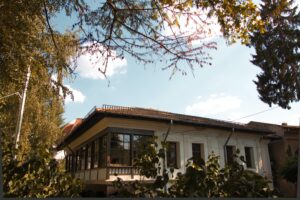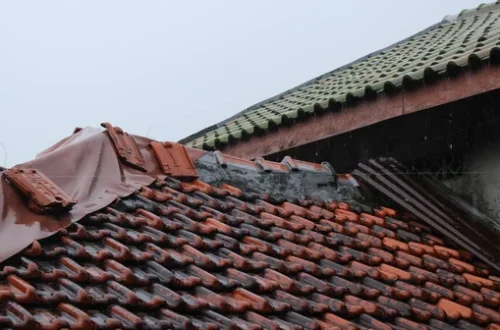Preserving Historical Trees in Lexington
Lexington has a beautiful variety of historic trees. They add to the unique character of our neighborhoods, help stabilize soil, provide glare and heat protection, increase property values, attract wildlife and provide natural flood control.
The town’s existing bylaw requires homeowners and developers to log the trees they plan to cut down as part of a building or demolition permit and either replant or pay mitigation fees. But some argue that the town isn’t enforcing the law effectively.
Gratz Park Historic District
Gratz Park is a beautiful, tree-lined neighborhood in Lexington, offering a charming enclave that provides an interesting glimpse into the city’s history. This service area boasts many historic buildings, with houses constructed in various styles throughout the 1800s and early 1900s, ranging from Federal to Queen Anne. Notably, the identical Goodloe Sisters’ homes, built in 1901 and located on 239 and 243 North Mill Street, serve as a great example of the Queen Anne style within this picturesque district.
The Gratz Park Historic District also features Old Morrison, a stunning Greek Revival building situated on the Transylvania University campus. Originally serving as the university’s main administration building, it has now been repurposed into a museum, providing this service as a fascinating window into Lexington’s rich past.
South Hill Historic District
The South Hill Historic District is a neighborhood that was built up around the turn of the 20th century. Its earliest homes were built in the early 19th century and are mainly constructed in the Federal and Greek Revival architectural styles. The houses are aesthetically compatible and have been placed on lots that are of similar size.
This is a middle-class residential neighborhood that was developed for Lexingtonians living on the outskirts of the burgeoning 19th-century city. The houses in the South Hill Historic District were primarily designed by two of Lexington’s most accomplished architects.
The neighborhood also contains the Old Kitchen, a brick building that was a social center for black Lexingtonians and is now used as a museum. A self-guided tour of the neighborhood is available and is recommended for anyone interested in learning more about the history of Lexington. The neighborhood is conveniently located near places like Rupp Arena and the Lexington Convention Center.
The Bullock House Historic District
Lexington was a center of culture well into the mid-1800s, earning the city its nickname “the Athens of the West.” Lexington residents continue to be committed to the arts and the city’s culture today. The Lexington Arts and Cultural Council (LACC) operates downtown at a 1904 Beaux-Arts Classical building called ArtsPlace that offers galleries and performance space for local arts organizations.
The South Hill Historic District is an early residential neighborhood of Federal and Greek Revival style houses with some homes built after the Civil War. It is a rare example of a residential historic district that contains a mixture of architectural styles aesthetically compatible in scale and lot size.
The district’s most prominent structure is the Bodley-Bullock House. It was built in 1814 for Lexington Mayor Thomas Pindell. It was later purchased by General Thomas Bodley, a veteran of the War of 1812 and a leader during the Civil War. The last owner of the house was Dr. Waller Bullock who founded the Lexington Clinic.
The Loudoun House Historic District
The Loudoun House Historic District was listed on the National Register of Historic Places in 1985. The property is a large, 1850’s Gothic Revival mansion that displays the architectural facet of the Romantic Movement that was popular at the time.
The North Limestone neighborhood is one of Lexington’s most diverse, lively and engaging streets. It is home to many historical and cultural resources, and it’s easy to stumble upon interesting relics everywhere you go!
The intersection of Limestone and Main Street was historically the central hub of Lexington. This was where the city’s most important roads met – Limestone extended north to Maysville and south to Nicholasville, while Main Street ventured east to Richmond and west to Frankfort, Kentucky’s capitol. It was around this intersection that Lexington’s commercial and residential centers developed. During the 1950’s and 1960’s, these centers shifted to locations outside of downtown Lexington. This shift caused the decline of the largely pedestrian North Limestone neighborhood.
Preserving Historical Trees in Lexington
The town of Lexington has a history of protecting its historic trees. But it’s not always easy. Some say the town isn’t effectively enforcing its own bylaw that requires homeowners and developers to log their trees when seeking building or demolition permits and pay fees for removals.
Grand homes built for Lexington’s wealthy and prominent residents characterize this district. They are of a variety of architectural styles.
Gratz Park Historic District
The Gratz Park Historic District is one of Lexington’s most beautiful areas, comprising a city park and 16 large residences. Its history dates back to 1781 when the land was first platted. It was named after Benjamin Gratz, the patriarch of the family that still lives in the neighborhood today. He was a hemp manufacturer, politician, and Transylvania University Trustee.
The neighborhood is also home to many historic buildings, including the Hunt-Morgan House. This is a gorgeous Federal-style building that was built in the early 19th century. It now operates as a museum, giving visitors an insight into how Lexington’s elite lived in the past.
Gratz Park is also home to Transylvania University, which makes it a hub of culture in the Lexington area. It attracts scholars and students from around the country, further enriching the neighborhood’s cultural heritage. The Gratz Park Historic District is a must-see for anyone visiting Lexington. Its stunning buildings and beautiful architecture will surely leave you in awe.
Walnut Hill Presbyterian Church
With its many historic districts and buildings, Lexington is often described as “the Athens of the West.” However, growth and redevelopment have caused these important historic places to disappear from view.
The church was designed by Kentucky architect Cincinnatus Shryock, a member of the famous family that also designed Old Morrison on the campus of Transylvania University and the old state capitol building in Frankfort. Today the church is a music studio run by husband-and-wife team Ric and Karen Hordinski. It has been said that entering the building is like walking into a time capsule, with sermon notes still perched on the pulpit and unfiled bills on the desk in the office.
South Hill is one of the earliest neighborhoods of middle-class residential homes established in Lexington. It was named for its location on a high hill overlooking the Town Branch of Elkhorn Creek. The homes in the district represent a wide range of early styles. Many of the residents were prominent figures in local affairs, including Mary Todd Lincoln’s father Levi and U.S Senator, Speaker of the House, Secretary of State and presidential candidate Henry Clay.
South Hill Historic District
Lexington’s historic neighborhoods are as important to the city as its famous horse racing facility and acclaimed college. A renewed interest in the city’s history has led to preservation of several significant historic sites including Gratz Park and Bell Court.
The South Hill Historic District features houses built during the early 19th century with a mixture of Federal and Greek Revival styles. The neighborhood also includes homes built after the Civil War into the early 20th century. Homes designed by two of Lexington’s greatest architects, John McMurtry and Cincinnatus Shryock, can be found throughout the district.
The neighborhood’s historic integrity is further strengthened by the fact that it was one of the earliest middle class residential areas in the city. Prominent black citizens of the time lived in the area alongside prosperous whites. This district also contains the oldest home in Lexington, the Adam Rankin House located on South Mill Street. The house was restored by the Henry Clay Foundation and now reflects its 19th-century appearance.
Old Fayette County Courthouse
Located within the South Limestone Historic District, the Old Fayette County Courthouse is an example of Richardsonian Romanesque architecture. It was built between 1898 and 1900. It was listed on the National Register of Historic Places in 1983.
The building served as the county courthouse until 2002. The Lexington History Museum occupied the bottom two floors until 2012. The discovery of asbestos forced the museums to leave the building.
Although the building no longer houses the courts, it remains an important part of the community. It is now a combination restaurant, bar, and event venue. The building was renovated using federal and state historic tax credits, as well as $22 million in city funds.
The lawn of the Old Fayette County Courthouse is home to statues of John Cabell Breckinridge and John Hunt Morgan, both of whom were natives of Lexington. The lawn also features an expansive obelisk. The site has been a center of activity since the area was first settled.




